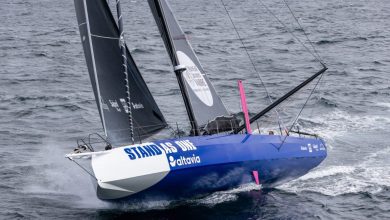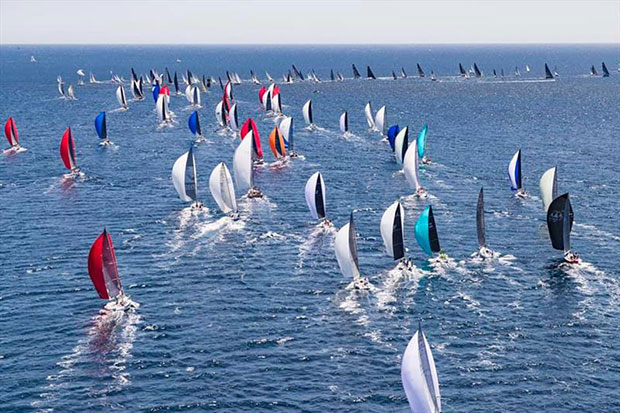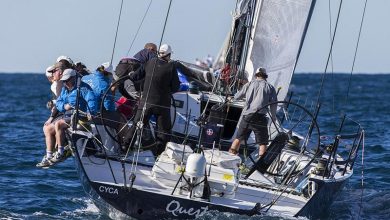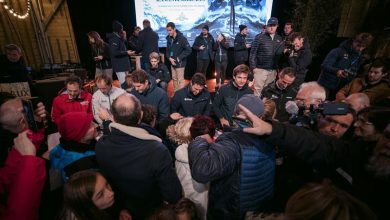Transat Jacques Vabre & The Trimaran SVR Lazartigue
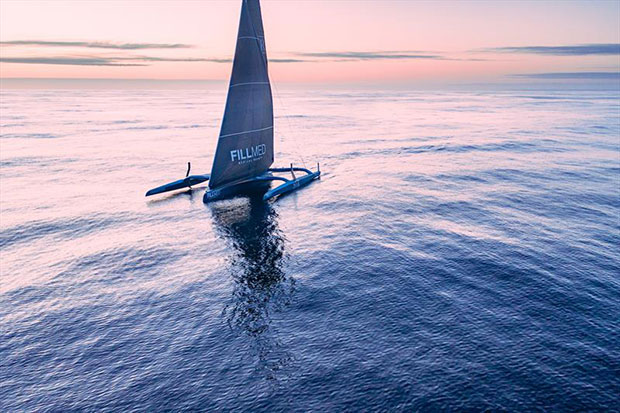
Since setting sail from Le Havre on Sunday, the Trimaran SVR-Lazartigue has been continuing to make headway within the Ultime fleet in the 15th edition of the Transat Jacques Vabre.
After a very unexpected start to the race, where the lack of wind coloured the positions for a considerable time, François Gabart and Tom Laperche are now battling it out at the head of the race close to the Canaries on their flying boat.
The moment was as unexpected as it was magical. Somewhere in the Bay of Biscay, François Gabart and Tom Laperche were lucky enough to be escorted by several dolphins, which had come out to meet them. Timeless as these events were, the two sailors would have preferred to cut short their time with them and latch onto some breeze. Indeed, like the rest of the fleet, the Trimaran SVR-Lazartigue has had a particularly complicated first few days out on the racetrack with a lack of breeze across a large proportion of their descent of the Bay of Biscay. “The start of the race was especially slow, confirms François Gabart. The whole of Biscay was ensnared by a windless ridge of high pressure. Like everyone else, we spent 24 to 36 hours at a virtual standstill, which is rare with our boats. What was amazing was the fact that we were also nearly in front of home, in areas where we’re used to training and posting speeds of 30-35 knots. Instead, there was no wind and also quite a lot of cloud, which didn’t make it easy to read the race zone and the sky. It was a kind of hunt for a puff of breeze. However, on a positive note, it also enabled us to gently get our sea-legs.”
The exit from Biscay was not the easiest of things. “We’ve had to put in a lot of manoeuvres since the start, especially on Tuesday night through into Wednesday where we had to slip along between the Finisterre TSS (Traffic Separation Scheme, a zone forbidden to race boats) and Cape Finisterre with quite strong breeze, where we were forced to put in several gybes. It’s a very delicate passage with quite a few fishermen and cargo ships. It was a bit lively. After that we managed to slip along in a corridor of breeze along the Portuguese coast.”
With no wind and virtually no routing options to try, the five boats competing in the Ultime Class, that of the fastest flying boats, were sailing a very similar route for a long while. “We could virtually see everyone on AIS (automatic identification system with a range of up to about 25 miles) or even by eye, smiles François Gabart. It was quite something really. The first morning, after Ushant, four of our boats ended up nicely aligned as if we were on the start line. The sunrise capped it off as it was fabulous. On approaching La Coruna, we passed within 0.3 miles of Actual Ultim 3 on two occasions. We were almost close enough to say hello.” In addition to the unusual situation, the skipper also highlighted a positive aspect of this very tight ranking for the Trimaran SVR-Lazartigue, which was only launched back in July. “It’s always interesting to have boats alongside us, he explains. These are still our first proper sea passages with the boat and it’s enabling us to get our bearings. Tom and I are trying to understand how the boat works. It’s a job and a half but it’s great. It’s important not to forget that we’re only just discovering the boat as we race. It’s interesting for us as it’s giving us some references on the boat and presenting us with a great challenge. We’re always looking to go faster than the others. It would be great to be able to stay in contact like this for as long as possible.”
Now making headway around the Canaries having sailed close to the coasts of Madeira and Porto Santo, François Gabart and Tom Laperche are now powering southwards towards Cape Verde and then they’ll have to negotiate the first passage of the equator and the formidable and dreaded doldrums for the first time, where the frequent lack of wind may shake up the leader board. For now though all is well. “We’re powering along at 30 knots under large gennaker and full main, the boat airborne, which is great, says François Gabart. The skies are pretty clear and the seas aren’t heavy. It’s really very pleasant. The challenge now is to slip along gently whilst circumnavigating the high pressure. It’s an absolute classic. We’re going to have to enter the zone of high pressure a little without covering too much ground, whilst avoiding stalling too much in the light wind. This will involve a fair amount of slipping along and downwind conditions. We’re going to try to gradually gain southing.” Their ETA is Wednesday 23 November.
by Trimaran SVR Lazartigue

